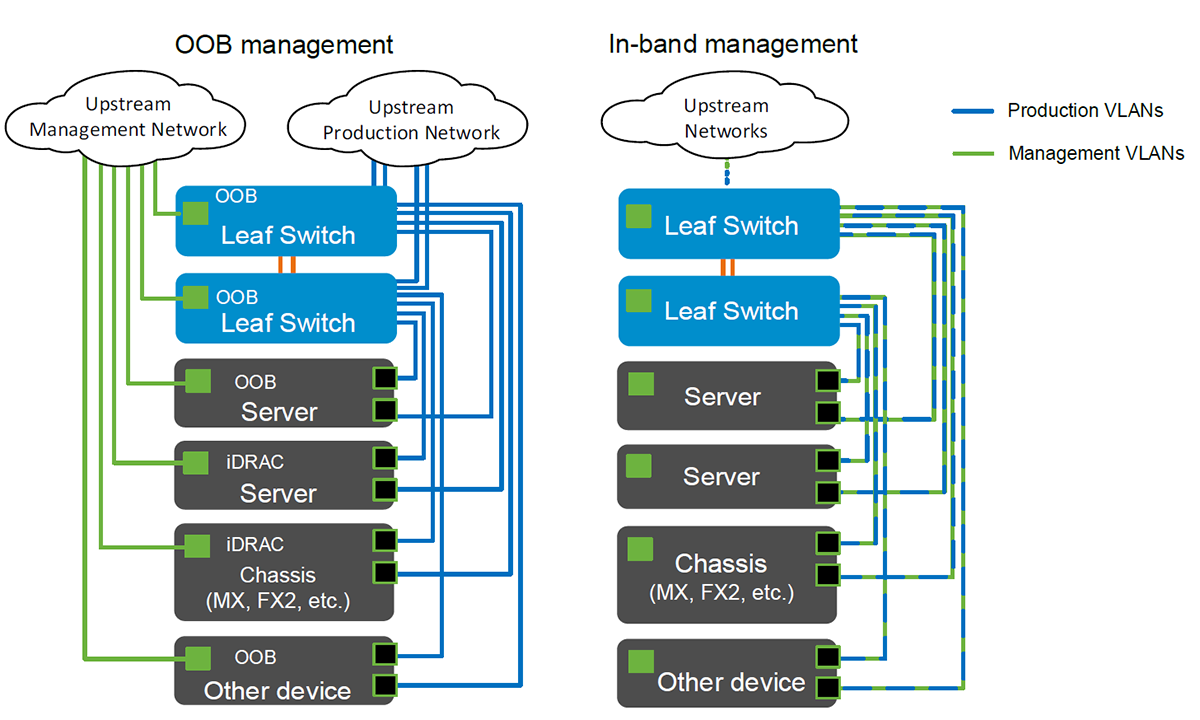Uplink ports on the management switch are used for connecting to the upstream management network. This network can consist of one or more NMS, management stations, and traffic between them and the managed devices. Uplink ports are identified as any Ethernet port that is not the lowest bandwidth on the switch (not including any OOB port). A 10 GbE port on a switch which primarily has 1 GbE ports is considered an uplink port, and a 100 GbE port on a switch which primarily has 10 GbE ports is considered an uplink port. Uplink ports are usually the highest bandwidth ports on a switch.
Configuring these uplinks to connect to upstream management is the same whether the management network is in-band or OOB. With OOB management, the OOB port on each managed device is attached to one of the lower bandwidth ports on the OOB management switch. The management switch itself becomes in-band as far as the management network is concerned. Provide an IP address to the management VLAN on any switch, dedicated OOB or not, to allow for routing and troubleshooting.
Optionally, the OOB port on each management switch may be used to allow for a second tier OOB network. The management traffic is routed between the first and second tiers as required.

